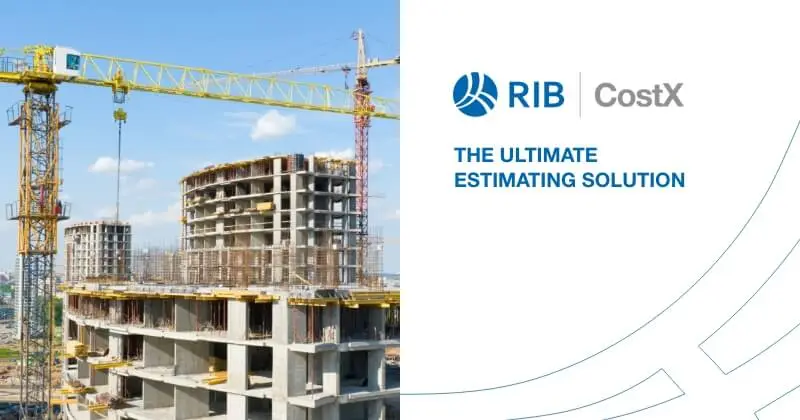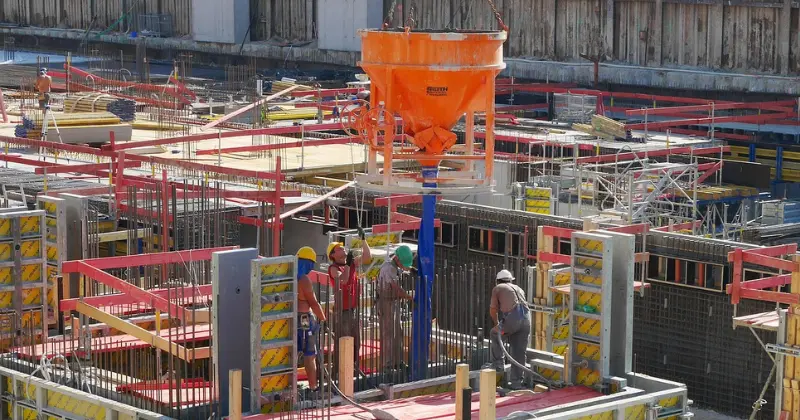11 mins read
What Is a Construction Contingency? Establishing Contingencies to Mitigate Construction Unknowns

Planning for a rainy day takes on new meaning when considering the thousands of expenses, design changes, equipment breakdowns, and weather events that can potentially derail construction project budgets. The concept of a construction contingency originated to classify and quantify these variables and minimize their impact on budgets and profits. Construction software solutions help stakeholders communicate, track, and analyze this valuable information.
What Is a Construction Contingency?
A contingency is a percentage of a project’s budget that is set aside for unforeseen expenses. Contingencies act as insurance policies or reserve funding sources that allow work to be completed on schedule without cutting costs in other areas or increasing the budget.
A typical contingency budget is set between 5-10% of the overall budget, depending on the level of project risk and number of unknowns. Some of the common external factors and construction contingency examples to be considered during planning include:
- Inclement weather
- Supply chain disruptions
- Design errors
- Overtime and other labor cost overruns
- Scope changes
- Damage repair and rework
Contingency costs can be incurred during any of the construction project phases. For example, a design error may lead to an unexpected increase in material expenses before ground-breaking. At the same time, a stretch of inclement weather might delay or complicate final detailing and sign-off steps.
Types of Construction Contingencies
Contingencies are intended to cover various unplanned expenses, so there can be many different sources and types of expenses. In general, project contingencies can be broken into three basic categories.
- Design contingencies: This budget portion is earmarked for architectural or structural changes. This might include minor changes to layouts and finishes or unforeseen design changes to accommodate soil or environmental factors discovered during the site survey.
- Bidding contingencies: Once all design documents are complete, the project enters the construction bidding process. If subcontractor or material bids come in higher than expected, it can also lead to additional contingency costs. This can be caused by increased competition for resources that are underestimated during design and planning.
- Construction contingencies: This portion of the budget covers the wide variety of unforeseen circumstances that can occur once the build begins. Some expenses may come from owner-requested material and scope changes, while others may be caused by extreme weather, labor issues, rework, and other unpredictable events.
Allowance vs. contingency
Allowances and contingencies serve a similar purpose by covering expenses that are not yet fully defined when the contract is signed but are applied in different ways. Allowances are typically used for items like fixtures, equipment, appliances, and finishes that will inevitably be needed but may be subject to change based on market conditions or client preferences.
While allowances are designated for specific items or costs, a contingency budget for construction mitigates any unknowns or unforeseen expenses that may occur, regardless of their type or origin. Since allowances and contingencies both play a part in construction budget management, each should be clearly defined and itemized in the contract.
The Importance of Construction Contingencies
While estimates and budgets tend to be more precise in industries like manufacturing and logistics, a contingency budget for construction is necessary to account for the variation nearly all projects encounter. Contingencies provide several significant benefits that include:
- Managing risk: The amount of risk is based on the impact and magnitude of unplanned or unwanted events. Construction risk management is the process of detailing risk factors so they can be eliminated, minimized, or planned for. Construction project contingency is one of the best ways to mitigate unavoidable risks upfront.
- Budget adherence: If only predictable costs were included in construction cost estimates, staying on budget would become impossible. A contingency is part of the budget from day one, so the funds can be allocated without inflating or reassessing the budget.
- Planning for the inevitable: Unpredictable and unforeseen factors (in their many forms) are unavoidable. Rather than letting surprises and changes derail progress and morale, contingency budgets acknowledge these scenarios as an accepted part of doing business.
How to Create a Contingency Budget
While random events and cost drivers may be unpredictable, standard practices and guidelines have evolved to apply more logic and consistency to cost contingency calculations. A systematic, detail-oriented approach ensures contingency budgets are both realistic and attainable.
- Risk assessment: Managing and assessing risks can be an exhaustive process that involves assigning realistic probabilities of occurrence to each factor to determine dollar amounts (expected values) in the budget. Simulation software and statistical methods like Monte Carlo analysis can be useful in calculating realistic expected values.
- Historical data: Reviewing unplanned costs and overruns from previous similar projects gives teams valuable clues that help to predict the contingency cost for construction going forward. This is especially true when the same unplanned expenses have occurred multiple times.
- Expert input: Industry experience and specialized knowledge play important roles in navigating the complexities of contingency planning. Input from engineers, project managers, and contractors can help identify risk areas and allocate funds appropriately.
Best Practices for Contingency Management in Construction

Over the years, best practices have evolved to move contingencies from guesswork and overreaction to a more accurate, consistent, and justifiable process utilizing software and statistical analysis.
Clearly define restrictions
The purpose of contingency in construction is to establish a reserve of cash for unpredictable issues, not to provide a catch-all to cover avoidable mistakes, pre-existing site conditions, or scope creep. Clear rules and restrictions defining how contingency funds can (and cannot) be allocated help to maintain construction cost control strategies and ensure funds are only used to cover genuine project risks. It is also useful to create written procedures to define the approvals required to access contingency funds.
Track contingency usage
When contingency funds are utilized, it is important to document how, when, and why contingency costs were allocated. A detailed and transparent tracking process prevents misuse of funds and minimizes conflicts or misunderstandings regarding project spending. Recording exactly why each transaction was necessary also makes it easier to analyze risk factors and plan budgets for future projects. Professional construction analytics software can help manage all data-related aspects and allow for real-time tracking.
Remain flexible
Contingency budgets are usually established while important design, material, and scope decisions are still being finalized and subcontractor bidding is not yet complete. Thus, it is natural to err on the side of caution and set aside a larger percentage of the budget for cost contingency.
It is important to remember that these percentages and dollar amounts are not etched in stone and should be adjusted up or down as the project’s risk profile changes. For example, once roofing and concrete pouring tasks are completed in a notoriously rainy area, the risk of weather-related interruptions or rework should be reassessed.
Communicate with stakeholders
Collaborating on the contingency budget throughout the project builds trust between project teams and stakeholders, including clients, investors, and regulatory bodies. Regular reports on contingency fund status can serve as bellwethers of plan and budget adherence. Transparent construction communication practices also support high-level decision-making while demonstrating accountability.
Incentivize unused contingencies
Contingency funds should be available when needed, but that doesn’t mean they should always be exhausted. Depending on the specific project and construction contract type, unused contingencies may be returned to the owner, shared between contractors, or allocated to contractors in the form of incentives. Establishing logical and fair incentive conditions can motivate contractors to exercise financial discipline, avoid mistakes, manage their resources effectively, and creatively resolve problems.
Use construction software
Software tools streamline all aspects of construction contingency management by automating change requests and approvals while enabling effective risk assessments and real-time budget tracking. Cloud-based construction software solutions also provide a convenient platform for collaboration and contingency usage reporting. RIB CostX is an advanced software solution designed to simplify takeoff and estimating processes while making it easier to track and analyze contingency costs. Powerful design revision tracking capabilities and customizable client outputs make CostX a complete construction management solution.
In Conclusion
Murphy’s Law tells us ‘anything that can go wrong will go wrong’ and the construction industry offers compelling evidence for this, with new sources of expense, delay, and risk arising each day. Innovation and collaboration have always allowed us to overcome the unforeseen, but contingencies provide a valuable safety net to ensure budgets and schedules remain intact. Tracking, analysis, and reporting processes for contingency management are taken to the next level through advanced construction software.
At RIB Software, we offer a range of specialized solutions to enhance processes ranging from bidding and takeoff to commissioning and handover. Our estimating and BIM takeoff software, RIB CostX, will allow you to estimate and monitor costs throughout the project for smart, data-driven decisions. If you are ready to experience the power of state-of-the-art construction technology, get your free demo for RIB CostX today!

Most Recent
11 mins read
10 mins read
10 mins read
29 mins read
Blog Categories

Ebook











